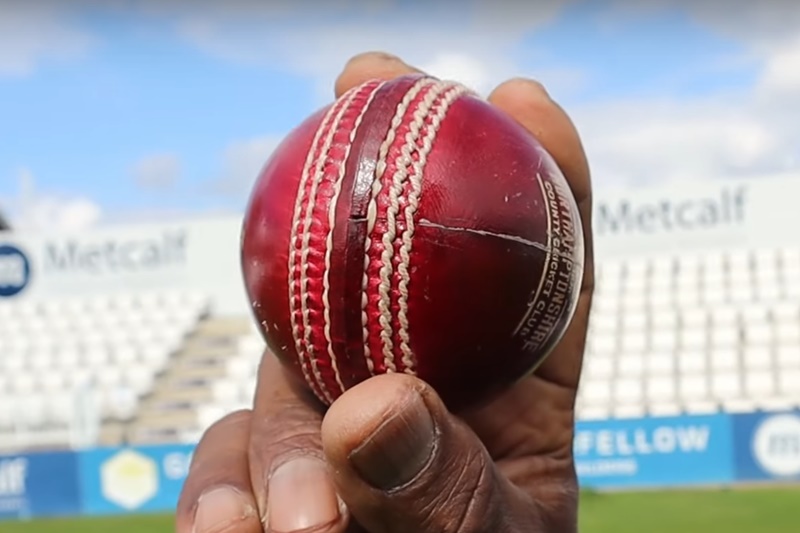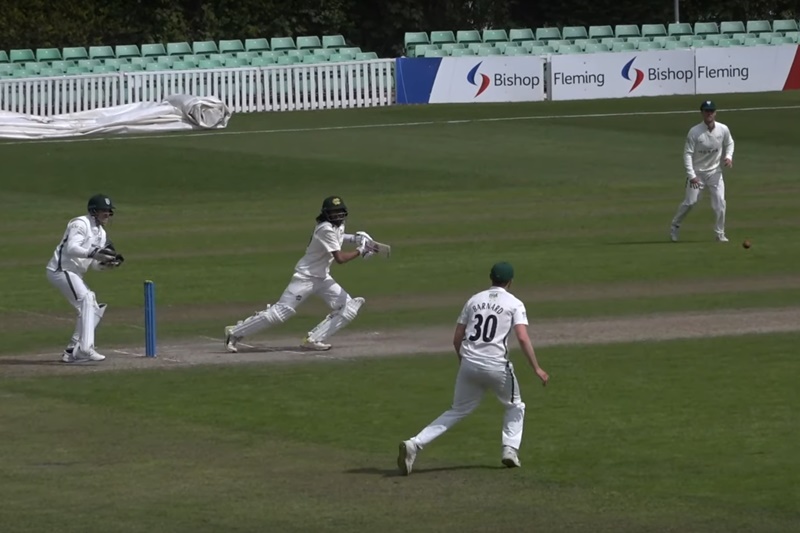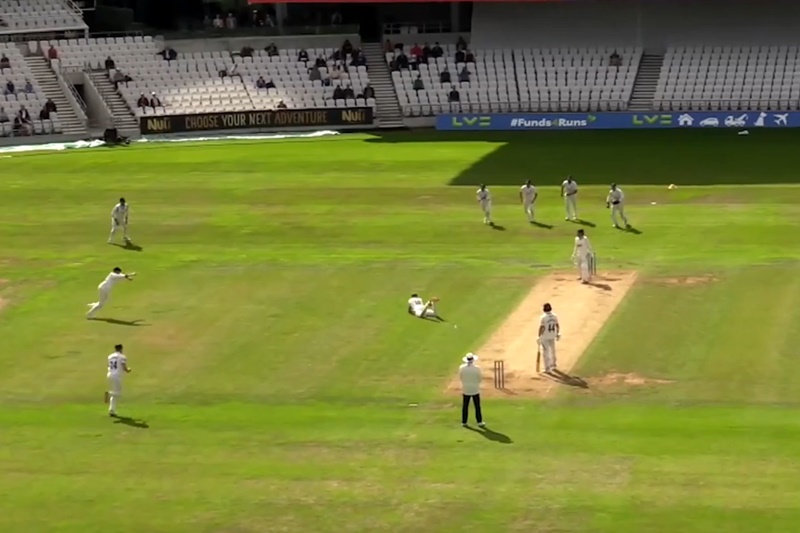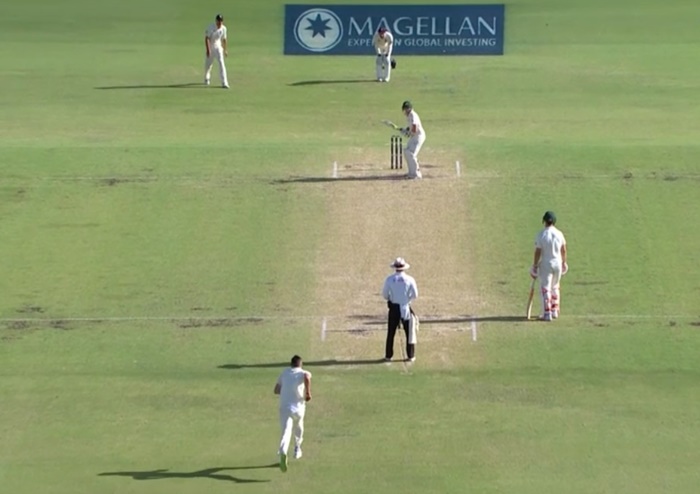In the wake of England’s Ashes failings, there’s been a lot of talk about how the County Championship is played on pitches that encourage medium-pacers. Pitches are not the big problem.
There was a good recent piece about county pitches by CricBuzz’s Rob Johnston. The overly-reduced version of that article is that actually county pitches are pretty good. Not perfect, but probably better than they were in the lead-up to England becoming the number one Test team in 2011.
So what’s the problem?

The simple truth is that county pitches are far less of an issue than the fact there are 46 million games a year. It is simply impossible to be a fast bowler across a county season. This is bad for bowling, but it also means that batters very rarely have to face that challenge – which is probably the bigger issue for the England Test team.
People have it all wrong. It’s not that there’s an incentive to bowl medium-pace. It’s that there’s a disincentive to try and bowl quickly.
Think of it like this. You’re a young seam bowler with the ability to top 90mph. You could deliver that in maybe half a dozen first-class matches a year – 10 tops – plus a handful of short format matches.
That’s pretty good for your county – but it’s probably not as valuable to them as a slower, more accurate seamer who can play in 14 matches and bags of one-dayers and who is far less likely to get injured.
You can’t really build a 14-match first-class campaign around a fast bowler. Certainly not if you also have designs on using them in limited-overs cricket.
So maybe you become that durable, bowls-within-himself, line-and-length bowler. Or maybe you stick with fast bowling and gear your game towards the shorter formats where you stand far more of a chance of being a central figure.
Picking a lane

It’s not a cut-and-dried, either/or situation. You can certainly try and be a fast bowler in the County Championship… if you want to…
But you can certainly forgive pace bowlers for choosing to approach their career differently.
There are at least 78 days of “top flight” domestic cricket in which a county player could feature each season (first-class, T20 and either 50-over or The Hundred).
That is not exactly an invitation to maintain a high intensity.
The human body doesn’t work like that. You can do low intensity things regularly, medium-intensity things less often and high intensity things only rarely. Furthermore, if you do a lot of fairly quick bowling, it will almost certainly hamper your ability to bowl really quickly.
A high moderately-quick workload will result in your becoming a more efficient moderately-quick bowler. But forever somewhat fatigued, you’ll lose that top end pace. You’ll basically become a diesel.
The upshot is that whatever the raw materials at the outset, there aren’t many fast bowlers plying their trade in the Championship.
A handful of fast bowlers plus a lot of matches equals very decent odds that any given fixture will lack high pace as a result of injury, rest or England duty.
How much fast bowling do County Championship batters face?

According to CricViz’s Freddie Wilde, between the start of 2015 and now, 0.6% of deliveries from pace bowlers in the County Championship topped 140km/h.
Just to be doubly clear – that’s with spin bowlers’ deliveries stripped out. If you watch Test cricket, 140km/h is not especially remarkable and yet County Championship batters are experiencing bowling of this speed almost never.
That ‘balls above 140km/h’ percentage jumps to 16% for Test matches as a whole and to 35% for Test matches in Australia.
If you’re a top-order county batter called up for the Ashes, you’re going from barely seeing a ball exceed 140km/h to facing deliveries of that speed (and faster) over a third of the time.
You’re playing a different game.
Please help crowdfund King Cricket or sign up for the email or ideally both.




I don’t necessarily disagree with this assessment, but why is it that the old foreign quicks that did the county circuit for years and played a lot of matches – lets take Malcolm Marshall as an example – were able to bowl at their very good pace season after season?
Was it that they were playing three and one dayers without worrying about T20?
Was it that they were largely full formed fast bowlers already, so the strain on their body didn’t matter so much?
Was it that the counties were willing to take more risks because they knew they could find replacements in case of injury?
Was it something else?
I think they were pretty good at husbanding their energy – I’m sure I’ve heard stories about Marshall only really cranking it up when he was either bowling at top quality batsmen, or he was pissed off. And it helps if you’ve got an action like Holding or Garner, I suppose
Also get the impression they maybe weren’t always giving it 110% in the one-day stuff they did play. It was definitely a secondary format back then, on top of which they did stuff like limiting run up lengths in the Sunday League.
People often make comparisons to how the County Championship was “back in the day” when talking about workloads but it’s really hard to do that as the whole domestic cricket ecosystem is completely different now.
Yes, I read an interview with a teammate of Marshall’s who said something similar. So why do English quicks not get taught the same thing?
Really good article – nail bashed squarely on the head
(Also, re: the above comment, I think a lot of the “fast” bowlers in the old 3-day county championship were not really bowling at full pace all the time. Although Marshall at 70% probably still felt quick brisk to the majority of hungover 80s county pros)
Great article, and great linked article by Rob Johnston. It does still leave the averages as an unsolved puzzle – bowlers like Cook, Fletcher, Robinson and Craig Overton have averaged around 15 last season or in the case of Robinson and Overton for several seasons (maybe Cook and Fletcher too, Cricinfo mobile has defeated me). That’s new. But then, batters are focusing less on succeeding against that kind of bowling, I suppose. Though you’d think the bowling they’re focusing more on is the express pace and spin they’d face in 20/20, where the money is. Complicated, isn’t it. I like the option of telling countries to prepare roads Rob mentions, if only for a change.
The future ain’t what it used to be…it never was.
https://youtu.be/bbDQRfqzekA
In those so-called English cricket good old days, the standard of the three day cricket was way below the standard of four day cricket now. On the seventh day the pace bowlers had to bowl of short runs in the John Player League – imagine what Bob Willis looked like thus restricted. And don’t say Darren Stevens.
English cricketers were unprepared for overseas conditions then and are to a lesser extent are unprepared for them now.
Limiting the talent pool to the 7% of the population who get the privilege of going to a posh school really does limited the talent pool.
This sounds sensible, but I find it difficult to reconcile it with the way things were in the past. For example, in the 1961 English season, Fred Trueman played in 34 first-class matches, bowled 1180 overs, and took 155 wickets at an average of 19.35. My copy of Roy Webber’s Cricket Annual for 1961 places Trueman in the category “RF”, i.e. genuinely fast (which is consistent with my memory of seeing him bowl). He was by no means alone as a genuinely quick bowler delivering a large number of overs. There was no limited overs stuff and county matches were three day affairs, but even so, it seems as though that level of workload is well in excess of that required of today’s bowlers.
It’s so hard to compare.
Is Fred a good example or is Fred the one bowler from that era with the freakish physiology to handle that workload? How much did he vary his pace match-to-match, day-to-day and spell-to-spell? How much difference did it make that he had a huge off season rather than playing 12 months a year?
As ever, good points well made.
I must say my interest in The Ashes drops off a cliff once the series is mathematically decided. Ok, it’s still a Test match. But it doesn’t matter nearly as much.
By all accounts, they mostly bowled within themselves when playing in the Championship or Leagues in England (largely for money). It’s why you don’t hear too many anecdotes about county batsmen in the 70s and 80s being decapitated… Most of those West Indian greats were good enough to be super-effective when bowling medium pace anyway, see also late-career Walsh and Ambrose.
…and Marshall and Daniels and Garner and Roberts and Holding…
I’d be interested to see those proportions of really fast balls in the Sheffield Shield, Plunkett Shield, Ranji Trophy, Quaid-e-Azam Trophy and the SA competition. Surely no domestic first-class cricketer anywhere in the world is seeing 140+ bowling as often as in Tests in Australia. Comparing domestic to international isn’t like for like.
If I were Buttler, I don’t think I’d be very happy with Ramps here. Seems like a bit of a betrayal of confidences if you ask me.
https://www.theguardian.com/sport/2022/jan/12/100-innings-facts-jos-buttler-not-test-batsman-england-ashes
Anyway, I guess it takes not one to know not one.
Ramps often seems drawn to platitudes, which makes this even more striking. It’s a peculiar role being hired as a columnist when your USP is your personal experience. Suppose the answer is to deal in generalities wherever possible. “Test batters tend to…” or “it is common for international cricketers to…”
Not sure this column will help him get future coaching jobs. You can imagine players being a bit more reluctant to reveal their flaws and insecurities when trying to work on stuff.